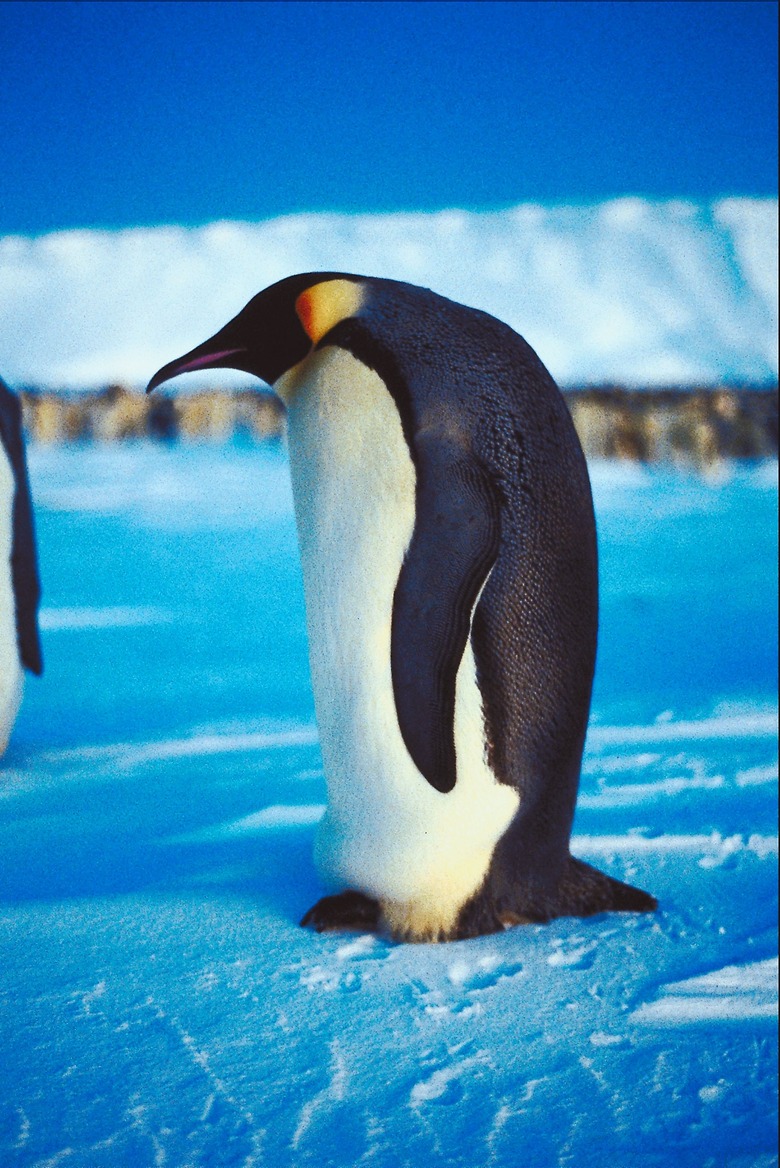How Do Emperor Penguins Defend Themselves?
Emperor penguins can be found living in their natural habitat in Antarctica. In winter, temperatures can plummet to minus 76 degrees Fahrenheit with wind chill. The emperor penguin is the largest of all penguin species, reaching a height of around 45 inches and a maximum weight of approximately 88 pounds.
Threats
Threats
The predators that pose a threat to emperor penguins in the wild; include sharks, killer whales, seals and birds — such as Antarctic giant petrels. Aside from predators, the main threat to emperor penguins is exposure to extremely cold temperatures. Emperor penguins are the only species of Antarctic penguin that stays in the region throughout the coldest periods of winter.
Defense Against Underwater Predators
Defense Against Underwater Predators
Emperor penguins are exposed to the threat of predators when they are foraging for food, such as fish and crustaceans in the water. The Emperor penguin's main predator is the leopard seal. The color of the penguin's feathers helps them to avoid being detected by predators when they are underwater. If a predator looks down on an emperor penguin, the dark feathers on its back help it to blend-in with the dark depths of the ocean below. If a predator is swimming below and looks up, the white feathers on the penguin's body help to camouflage it against the sky above the surface of the water. Speed is also an important defence for emperor penguins. Underwater, they can swim at speeds of up to 9.3 miles per hour.
Defending Young
Defending Young
Male emperor penguins incubate eggs for a period of around 9 weeks. Eggs are held on top of the male penguin's feet and they are covered by a fold of thick, feathery skin, called a brood pouch. Newly-hatched chicks remain under the protection of their father's brood pouch until their mother's return. Young chicks could die almost instantly, if they are unprotected from the harsh Antarctic climate. Once the mother returns, the male penguin can leave the chick and forage for food — after fasting for over 2 months. Females protect chicks from predators and keep them warm with their own brood pouches. Mothers feed their chicks with regurgitated fish. Older chicks huddle together for safety and warmth in groups known as creches; while their parents leave them for short intervals to forage. Chicks are mature enough to achieve independence at around 4 months of age.
Defense Against the Cold
Defense Against the Cold
Physical and behavioural adaptations help emperor penguins to survive in the harsh Antarctic climate. Penguins huddle together in large groups to keep each other warm. When a penguin from inside of the huddle has become sufficiently warm, they move to the outside of the group to allow one of the colder penguins to move inside and become warm. Emperor penguins have four layers of feathers. Smooth, waterproof feathers cover fluffy, insulating feathers. A thick layer of blubber provides the emperor penguin with additional protection from the cold.
Cite This Article
MLA
Ames, Hayley. "How Do Emperor Penguins Defend Themselves?" sciencing.com, https://www.sciencing.com/emperor-penguins-defend-themselves-10053841/. 24 April 2017.
APA
Ames, Hayley. (2017, April 24). How Do Emperor Penguins Defend Themselves?. sciencing.com. Retrieved from https://www.sciencing.com/emperor-penguins-defend-themselves-10053841/
Chicago
Ames, Hayley. How Do Emperor Penguins Defend Themselves? last modified March 24, 2022. https://www.sciencing.com/emperor-penguins-defend-themselves-10053841/
